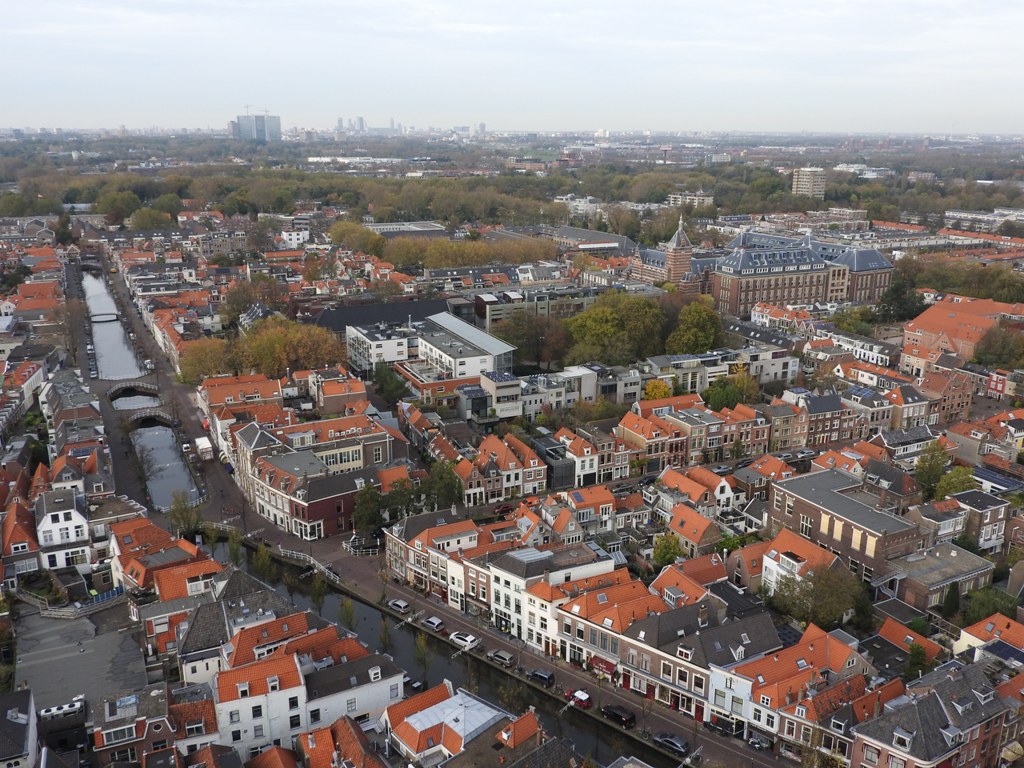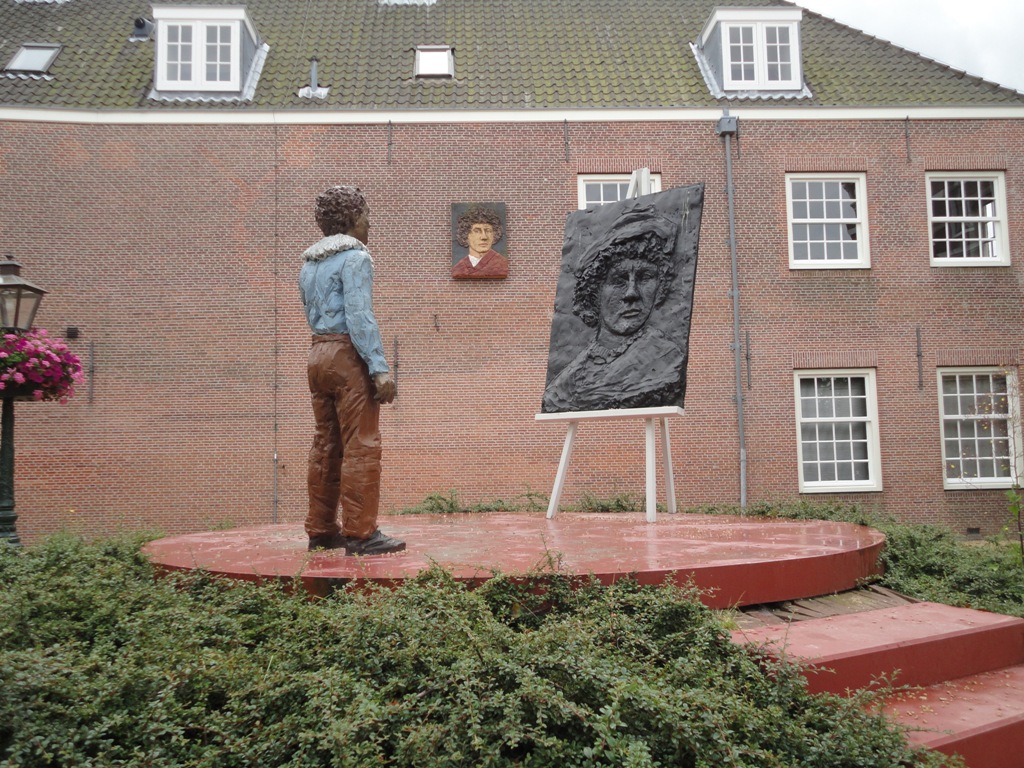In search of Dutch authenticity outside Amsterdam
Amsterdam is known for art, Anne Frank, canals, bicycles, tulips and legalized marijuana. An interesting mix of culture, gastronomy and modern lifestyle attracts many visitors - more than five million visit annually. Because of the crowds that amass into the city, the Dutch capital has lost a lot of its charm, so I aimed to find pleasures stereotypically offered by Amsterdam in smaller Dutch cities.
Delft, the birthplace of Vermeer and the Delft pottery
The city of Delft, home to the oldest and largest Dutch technical university, is just an hour-long train ride from Amsterdam. Several influential figures studied or worked here, including Jacob van't Hoff, the winner of the first Nobel Prize in Chemistry, Gerard Philips, a cofounder of Philips, and Ben van Beurden, the current director of the oil magnate Shell. The university frequently hosts international conferences, such as EuroMOF 2017 in the field of chemistry of porous materials in November 2017. Apart from academics, art lovers also like to visit Delft for it was here that Johannes Vermeer, the preeminent author of the Girl with a Pearl Earring and The Milkmaid, was born in the 17th century. Although his oeuvre includes less than forty works of art, Vermeer is recognized as one of the most important painters of all times because of his sophisticated style and innovative use of light. As it is his hometown, Delft hosts a museum in his honor, but if you wish to see his original masterpieces, you will have to go to Amsterdam’s Rijksmuseum or to Den Hague’s Mauritshuis. In addition to being proud of the famous artist, the locals are also fond of the traditional white-and-blue pottery known as Delftware, which has been produced here since the 16th century. Unfortunately, the authenticity of the pottery sold today is questionable - most of what is on offer in souvenir shops is made in China, as demand far exceeds the supply that can be provided by the few original workshops.

Haarlem, the home of a less well-known »Anne Frank« and canals
Most people have at least heard of if not read the Diary of Anne Frank written by a Jewish girl who was, along with her family, hiding from the Nazi regime in a concealed apartment in downtown Amsterdam for several years during World War II. Nowadays, hordes of tourists visit to their house now converted into a museum. Few people, on the contrary, have heard of the Ten Boom family who during the same period helped hundreds of Jews and other refugees in escaping to freedom. This family of watchmakers constructed a hiding place on the upper floor of their house in the center of Haarlem where Jews could hide. The Ten Booms used a special triangular sign placed in their window to mark safe passage. This way they successfully smuggled many refugees until they were betrayed, similar to Anne Frank’s family. Most of the family died in prison or concentration camps. The only survivor, Corrie Ten Boom, published several books describing the life of the family in those terrible times after the war.
Many Dutch cities, including Amsterdam, Delft, Haarlem, Leiden, Rotterdam and Utrecht are built on the banks of river canals which effectively serve as traffic routes. Since commuting by car is a huge expense in the Netherlands due to the high costs of driver’s license, fuel and car ownership taxes, people prefer to move around by boat or by bike. Roads are equipped with wide cycling routes, as people cycle not only within cities but also between them. River canals have a system of signs and traffic lights similar to the one in the roads, so the transport proceeds smoothly at all times. Haarlem is no exception - the passage to larger boats is made possible by the many drawbridges such as the one in the photograph.
Leiden, the city of Rembrandt and home to the oldest Dutch university
If Delft is known for its technical university, Leiden is home to natural sciences and it is even referred to as »The City of Discoveries«. For example, refraction of light and Snell's law, superconductivity, the origin of comets, and even Einstein's theory of expanding Universe have all been formulated here. If the university in Delft occupies a certain area of the city, this is not the case in Leiden: different university buildings intertwine the city, which is transformed into a real student town. Libraries, cafés full of young people and Heineken in abundance create a lively and friendly atmosphere. My first experience with Leiden was a canal boat trip, an enjoyment that tourists usually take advantage of in Amsterdam. Although it was mid-July, the ride gave me goosebumps all over my body! Weather in the Netherlands is extremely unpredictable. Even in the summer months, sunshine is often surpassed by clouds, fog and rain, and temperatures can drop to just a few degrees Celsius over ten. It is fascinating that despite the constantly changing weather and frequent showers, people continue to bicycle and ride boats without roofs.

Leiden is also known as the birthplace of Rembrandt Harmenszoon van Rijn, better known as Rembrandt because he signed his works solely with his first name. You can visit his house, which has been turned into a museum, or wander around Rembrandt Street. People of Leiden are proud of their countryman, who is nowadays considered the most important artist in the Dutch art history. However, if you would like to see his original paintings and statues, you will have to visit Amsterdam’s Rijksmuseum or Den Hague’s Mauritshuis. Many of his works are also scattered around art museums all over the world, for example in London, St. Petersburg, New York and Washington, D.C.
Hordes of tourists flood Amsterdam daily, but fortunately the
Netherlands hides many smaller cities that have a good tourism infrastructure, yet are less swamped with foreigners and more charming. Beyond cities and towns, you should not forget to visit the endless Dutch sandy beaches, where you are guaranteed to find your inner peace, and the Dutch countryside, where some of the world’s most delicious cheeses are produced.